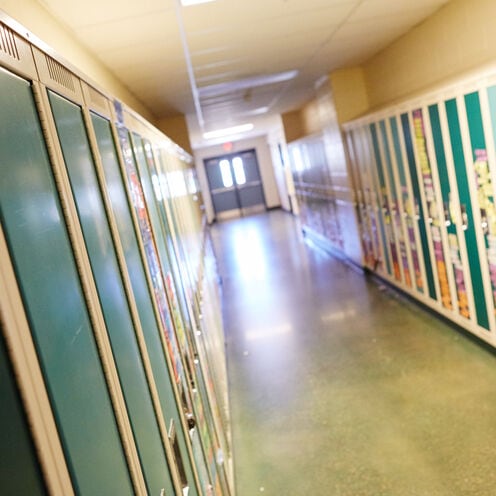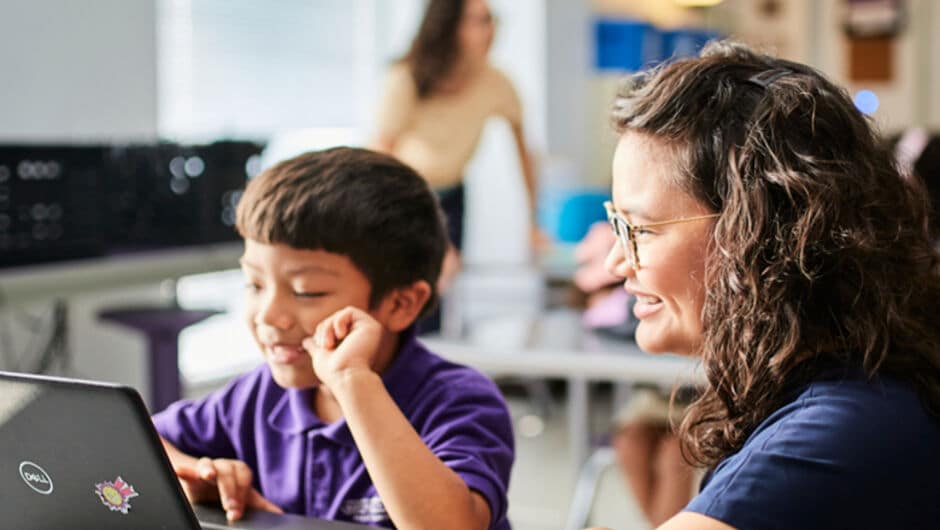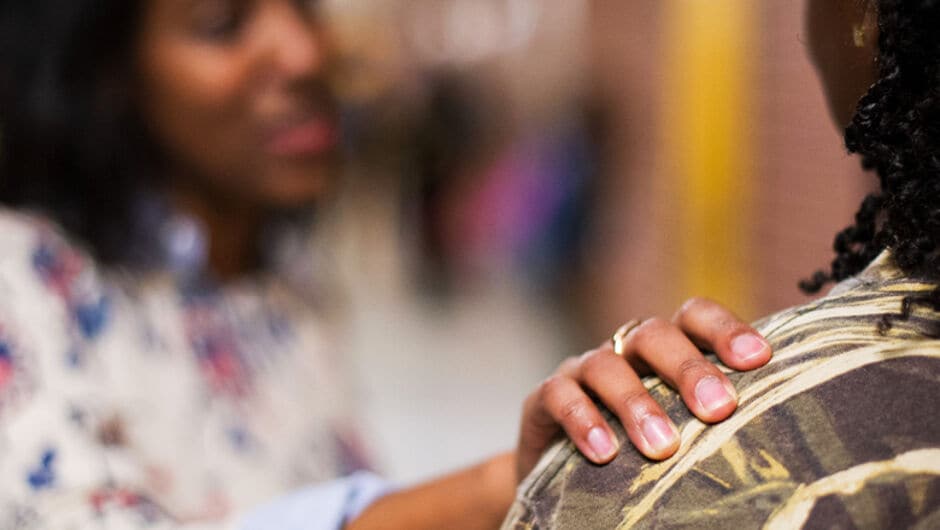
Principals Without a Playbook: Leadership Amid the Pandemic
How school leaders are working to support their students and teachers and keep learning going while schools are closed because of the coronavirus.
Like just about everyone, school principals are struggling to process the unprecedented measures needed to combat the outbreak of COVID-19, including lengthy and often indeterminate school closings.
“I had snow days when I was a kid. We've had minor earthquakes out here,” said Jeremy Hilinski (Los Angeles, ‘03), principal of Bret Harte Elementary School in San Francisco, a city in the midst of one of the most severe COVID-19 outbreaks in the country. “We have wildfires once in a while, and we had a day off a few years ago when it rained a lot. In terms of closing school for weeks because of a pandemic, that's pretty new.”
With the news changing daily and more and more schools closing, school leaders are scrambling to address a situation for which they have no playbook: doing what they can to reassure and support students and teachers, striving to keep education going in some form during closures, and trying to process all of it themselves. They are at once improvising and relying on previously drafted disaster plans, tending to logistics and worrying about what students will eat and how they will learn.
I spoke with several Teach For America alumni who lead schools around the country about how they and their school communities are responding to the coronavirus outbreak. At the time we spoke, many schools had announced relatively short-term closings—two or three weeks, often adjacent to their planned spring break—but with new guidance from the Centers for Disease Control and the intensifying of the outbreak, those are likely to be extended in many places.
Ensuring Students’ Wellbeing at School
As new as the situation is, there are parts of it that do feel familiar to educators, at least when it comes to keeping students healthy while school is—or was—in session.
“It really is very similar to what we do for flu and teaching kids about hand washing and cleaning surfaces,” said Sarah Ranney (St. Louis ‘06), head of school at Lafayette Preparatory Academy in St. Louis, which has seen only a handful of COVID-19 cases so far. When I spoke with Sarah last week her school was open (though the city’s schools have since closed at least through early April), and she said volunteers were working to disinfect the school after hours, in addition to the custodial staff, focusing on door handles, light switches, classroom manipulatives, and other areas and items “that maybe aren't on our daily clean list.”
School leaders are also concerned for students’ emotional wellbeing and, while school remained in session, worked closely with their staffs on how to discuss the news, and address the inevitable uncertainties, with their students.
“Our philosophy as a school is to be pretty upfront with students about questions that they might have and what it is they want to talk about,” Sarah said. Her own son is a third-grader at the school, so she’s having these conversations as a parent and as an educator. “I find that talking to kids about the facts is really helpful and reminding them about their own locus of control and also about taking care of our community.”
Despite these efforts, the news of the spreading virus can be a particular challenge for students dealing with trauma and its effects. Steven Ward (D.C. ‘12), principal of Aspire Hanley Middle School in Memphis, said spring break was approaching just as the COVID-19 news was growing grimmer, heightening the stress for some of his students.
“Spring break is already a time where there's a lot of anxiety for some of our students who view school as the most stable place,” he said. “I think with this threat, even though we only had two diagnosed cases [in Memphis] and they were far removed from our community, it might have seemed like to some students that even school wasn't a safe place for them, and that really, no place feels like a safe place for them.”
Jeremy said he has seen a similar phenomenon is his school, as some students’ pre-existing trauma is triggered by current events.
“For adults...we can think, ‘I need to be my best self,’ but for a trauma-impacted third-grader, it's a whole different story,” he said. “We've had more kids melting down and we've had a bit of an uptake in behavior issues that we've been working with kids on.”
In Nashville, LaKendra Butler (Metro Atlanta ‘05), founder and executive director of STRIVE Collegiate Academy, was focused on supporting her students through another trauma, the March 2 tornado that killed 24 people in the city. The tornado closed the school for several days, and within three days of returning, school closed again because of the COVID-19 outbreak.
“We didn't even get a chance to have a conversation about it because we came back on Monday with an idea of helping kids cope from the tornado because it hit the area by my school the worst, so we had kids who lost homes and I would say over half of my students were without electricity the entire time,” LaKendra said. “It was a very weird transition.”
Concerns of Closing Schools
While closing schools is a necessary step for helping to contain the virus, the principals I spoke with are also concerned about ensuring students have the supports and services they usually receive at school. And that begins with meals.
At Jeremy’s school, more than 99 percent of students qualify for free or reduced lunches, and he said, “we don't take a dollar in the cafeteria.” He is committed to continuing to serve meals to students even during the school’s closure.
“We don't know exactly how, but we know that in some way, shape or form that that is likely going to happen,” Jeremy said.
Other principals said they would partner with local nonprofits who already help serve and feed local families as a means of ensuring their students receive food while school is closed. Sarah’s school, a mixed-income community, did a food drive, so middle-income families could help lower-income ones through this challenging period.
But there is also much that students need that schools cannot provide while closed.
“We have a lot of kids that have experienced trauma, that are living in public housing that are homeless,” Jeremy said. “Those types of things, whenever you close school for any reason or whenever people are worried that that's going to happen, it brings out all kinds of sentiments of insecurity.”
Maintaining Learning During Closures
Of course, with school out for what will likely be an extended period in many districts, maintaining students’ education was foremost on principals’ minds. The speed with which the outbreak led to severe social-distancing guidelines caught many school leaders without plans to keep education going for what is likely to be extended closures. They are tackling this in different ways, depending on how much time they’ve had to prepare and their students’ level of access to technology for online learning resources.
Sarah said the administration surveyed the school community to see how many families had reliable internet access at home, to judge whether online learning was feasible. Though more than 97 percent reported having it, Sarah said the school decided it was not enough to move to a model where learning would take place primarily online, especially considering families could lose their internet access as parents face economic hardships in the coming months.
“What we've elected to do with that is have all of our teaching staff design an independent two-week unit that can be completed at home,” Sarah said, adding that teachers will be creating supplementary materials that can be accessed electronically via Google Classroom.
Steven estimated that the percentage of students with reliable internet access and a device to use at home is only in the “mid to high teens” at this school. “We're still trying to think through how we can provide them with instruction, during this time, and still follow the best practices outlined by the CDC to keep everybody safe,” he said.
LaKendra said her concern is that while her students generally have phones, many don’t have computers at home, so interactive online learning would be a challenge. Her solution? Teachers will videotape lessons, which can be easily watched on a phone. For assignments, students can work out problems or take notes on paper—which the school will provide—and then submit their answers via a Google form.
Jeremy said his school is likewise offering a combination of online lessons and paper packets, but it’s harder to create such programs for younger children. “Distance learning is much easier for high school kids,” Jeremy said. “Teachers can put stuff online. That's more of a thing that they're used to, whereas, with kindergarteners, that's going to be something new.”
Regardless of age, he added, “The biggest message I'm sending home is: Make sure that kids are reading at home,” Jeremy said.
Supporting Teachers Through the Crisis
School leaders are focused not just on supporting and educating their students during this crisis, but are also concerned for their teachers’ wellbeing. Several spoke of limiting the volume of communications they passed on to teachers, in order to consolidate information into a more digestible form and allow teachers to focus on students and on their own wellbeing.
Jeremy said his school has a wellness center that services students as well as teachers and staff. And as a school leader, Jeremy said an important part of his job is to be “like a guidance counselor for the adults some days.”
“If adults aren't in the right space, they're not going to be in great shape in front of kids,” Jeremy said. “We need to prioritize the adults and make sure that they feel supported and happy too.”
The beginning of the closure at LaKendra’s school coincided with spring break, allowing some early career teachers to return to their hometowns to spend the time with their parents. Many were still without electricity in Nashville from the tornado, “so going home was just like a relief,” LaKendra said.
In preparing to shut down, Steven said he held a conference call with teachers to discuss logistics and expectations after spring break, which likewise fell during the first week of the closure.
“All of their questions really stemmed [from their concerns for] for students, like, ‘Can students still eat? Will we have Chromebooks available? What will the work look like for them? How can we best support kids?’ Those are some of their questions,” Steven said “I think there's some anxiety there because there's a lot still unknown and each day it seems to get deeper and deeper. “
Looking to the Future
As overwhelming and unprecedented as the current closures are, educators are already looking ahead to when they may return to school and to routine, whenever that may be.
“I hope when we come back, we've got a sense of normalcy, we've got a sense of calm,” Jeremy said.
When schools reopen and the current COVID-19 scare is behind them, educators hope some lasting good may come from the current efforts to support all students through the closures.
“I wonder how they can take those lessons forward even after this is all past us,” Steven said. “I also wonder how we can have the same enthusiasm about making sure students are fed over breaks or even over weekends, making sure families who are so impacted by the changing landscape of public health or even the economy, they get what they need, so that all students can be successful.”
He said he hopes the current supports being put in place for students become more than a “temporary band-aid.” “This is going to really expose a lot of inequities in education but also a lot of opportunities,” he said.
How have you or your school community been impacted by COVID-19? Contact editors@teachforamerica.org to share your story. And find resources for educators to support students and communities through the coronavirus outbreak.
Sign up to receive articles like this in your inbox!
Thanks for signing up!
Content is loading...






